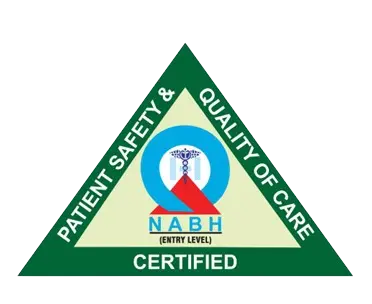Most present-day office work requires employees to spend multiple hours in front of screens while remaining stationary with limited body movement. The working habits that improve work speed simultaneously produce several health troubles including upper back pain. Many people experience shoulder and neck as well as upper spine discomfort as a result of their workday activities. The following text examines upper back pain causes together with its classification patterns as well as proven solutions for treatment.
Understanding Upper Back Pain
Back pain develops in the area ranging from the neck base to the rib cage bottom. Professional sitting and repeated strain combined with bad posture are the main culprits behind upper back pain because they affect office workers more than lower back discomfort that stems from lifting or unexpected movements.
The pain intensity varies from moderate to intense and interferes with regular daily performance. The correct approach for pain relief depends on what type of pain you suffer from.
Types of Upper Back Pain
At least three types exist to describe upper back pain based on its origin and character.
- Muscular Pain
The majority of back pain among office workers results from strained muscles together with tension and excessive work tasks. The affected region demonstrates tightness together with soreness and aching sensations in both the upper back and shoulder area.
- Joint Pain
The multiple joints found in the spine become inflamed and stiff when individuals spend long periods sitting improperly.
- Nerve Pain
Rounded or compressed spinal structures brought on by bad posture lead to severe burning sensations that extend from the upper back to the arm area and shoulder.
- Postural Pain Syndrome
The alignment problem of the spine develops due to poor posture which progressively creates persistent painful sensations. Working at a desk in a slouched position serves as a primary cause of postural pain syndrome.
- Referred Pain
Pain in the upper back sometimes begins as a symptom from either the neck region or disrupted functioning inside body organs. Getting to the main source of the problem remains essential to treat the issue properly.
Common cause of upper back pain in Office Workers
There are many causes behind upper back pain which mainly affects the daily life of every human, especially in this present world where most people are office workers hence it is also noted most of the time that back pain due to office work also affects almost seventy per cent of the population. Let’s see the most common cause of upper back pain with a complete description:
- Poor Posture
Straining your upper back occurs because you spend time slouching at your desk besides hunching over your keyboard and craning your neck to see. These postures lead to long-lasting back muscle and joint discomfort.
- Prolonged Sitting
Inactivity that involves extended periods of static sitting stops blood circulation to back muscles thus creating increased stiffness along with discomfort.
- Incorrect Ergonomics
Poorly adjusted work equipment such as chairs monitors and desks will place negative stress on the upper back area. Pain develops due to awkward postures which result from a desk setup at an inappropriate height.
- Repetitive Movements
Spending time typing on the computer or using a mouse and keeping phones between your shoulder and ear hardens the upper back and the neck muscles.
- Stress and Tension
Workplace stress creates muscle tension throughout the upper parts of the back and shoulders thus intensifying pain symptoms.
- Weak Muscles and Lack of Exercise
Skeletal muscles which support the spine gradually weaken when someone is inactive so the spine becomes more likely to experience both pain and injury.
- Improper Use of Office Equipment
Upper back pain persists when you work at a desk or chair without proper lumbar support while using a monitor at an inefficient angle.
Effective Upper Back Pain Treatment and Relief Strategies
Office work cannot be eliminated but multiple interventions exist to heal upper back pain while blocking its advance. Below are the most useful and effective upper back pain treatment along with tips and strategies to follow in daily life and remove the cause of upper back pain from daily lifestyle:
- Improve Your Posture:
- An upright sitting position requires a relaxed posture and a straight back with shoulder muscles at rest.
- Maintain both feet level against the floor as your knees form a 90-degree joint.
- The correct placement of your computer monitor should be at eye level to stop neck discomfort.
- Adjust Your Workspace Ergonomics
- A chair with appropriate lumbar support should be used.
- Your computer equipment needs to be positioned at a reachable height to minimize strain on your body.
- You should obtain a sit-stand workstation which allows you to switch between seated and standing postures during your work hours.
- Take Regular Breaks
- Take brief stretching breaks that occur every thirty to forty-five minutes.
- New physical activity will engage your muscles if you move through your office space.
- Do shoulder shrugs together with neck rolls as simple exercises to minimize tension throughout your body.
- Strengthen Your Upper Back Muscles
- Strengthen your back muscles through exercises which include rowing and reverse fly movement and resistance band pull exercises.
- Through practicing Yoga and Pilates individuals gain better body postures that subsequently decrease spinal stress.
- Use Heat and Cold Therapy
- Use a heating pad to achieve muscle relaxation and enhance blood circulation throughout your body.
- Apply an ice pack both to decrease swelling and to manage acute pain.
- Massage Therapy and Stretching
- Routine massage therapy serves two purposes by relaxing tense muscles while it enhances blood circulation.
- Daily stretching of the shoulders together with chest and upper back muscles helps avoid stiffness.
- Hydration and Nutritious Food:
- Your healthcare requires hydration maintenance together with nutritious food consumption.
- The health of spinal discs depends on drinking enough water for proper hydration.
- To decrease muscle soreness eat anti-inflammatory foods such as leafy greens, nuts along with fish.
- Mind Your Mental Health
- You should learn to manage your stress through deep breathing and meditation as a method to reduce tension-related back pain.
- Make work-life harmony a priority since it helps reduce stress at the workplace.
- Use Supportive Accessories
- Additional spinal support comes from ergonomic cushions as well as lumbar rolls.
- A posture corrector is recommended for users who need assistance in keeping their spine aligned.
- Seek Professional Help
- Continued pain without success using home care methods requires you to consult with a doctor chiropractor or physiotherapist for professional treatment.
- Physical therapists will generate specific exercises along with techniques that can offer extended pain relief.
A note from CritiCare Hospital:
The accessibility of upper back pain stands lower than lower back pain yet both suffering forms negatively impact your daily existence. People can still suffer upper back pain even when they employ preventive measures but they have options which help reduce the risk of developing this condition. Straight posture combined with regular exercise and you should also work to minimize stress levels. You should contact your healthcare provider if your pain does not improve. Their healthcare knowledge allows them to identify your pain source after which they help you recover.
Conclusion:
The source of upper back discomfort in office settings becomes much easier to prevent and manage through knowledge of pain origins along with basic adjustments. You can experience meaningful relief through minor office improvements that consist of both posture correction and movement incorporation along with ergonomic equipment purchases. Professional care for upper back pain issues will deliver lasting solutions when medical assistance becomes necessary.
Address your back needs right now to achieve a painless work career future. Your spine wellbeing demands your immediate focus which you should combine with regular breaks and a straight posture.



